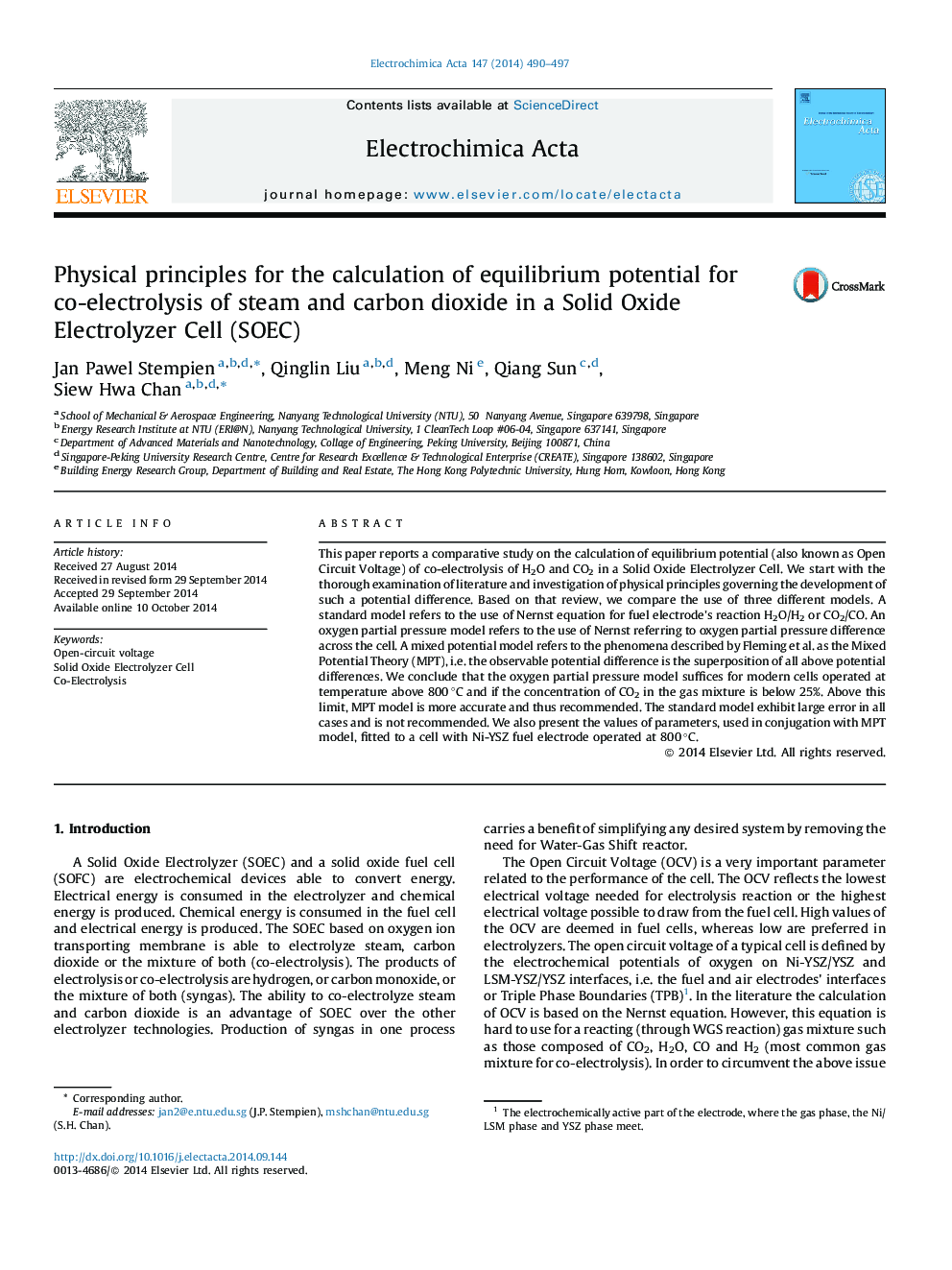| Article ID | Journal | Published Year | Pages | File Type |
|---|---|---|---|---|
| 185089 | Electrochimica Acta | 2014 | 8 Pages |
•Physical principles of establishing OCV in co-electrolysis SOEC.•Use of Mixed Potential Theory to calculate the OCV.•Comparison of available OCV models with experimental results.
This paper reports a comparative study on the calculation of equilibrium potential (also known as Open Circuit Voltage) of co-electrolysis of H2O and CO2 in a Solid Oxide Electrolyzer Cell. We start with the thorough examination of literature and investigation of physical principles governing the development of such a potential difference. Based on that review, we compare the use of three different models. A standard model refers to the use of Nernst equation for fuel electrode's reaction H2O/H2 or CO2/CO. An oxygen partial pressure model refers to the use of Nernst referring to oxygen partial pressure difference across the cell. A mixed potential model refers to the phenomena described by Fleming et al. as the Mixed Potential Theory (MPT), i.e. the observable potential difference is the superposition of all above potential differences. We conclude that the oxygen partial pressure model suffices for modern cells operated at temperature above 800 °C and if the concentration of CO2 in the gas mixture is below 25%. Above this limit, MPT model is more accurate and thus recommended. The standard model exhibit large error in all cases and is not recommended. We also present the values of parameters, used in conjugation with MPT model, fitted to a cell with Ni-YSZ fuel electrode operated at 800 °C.
